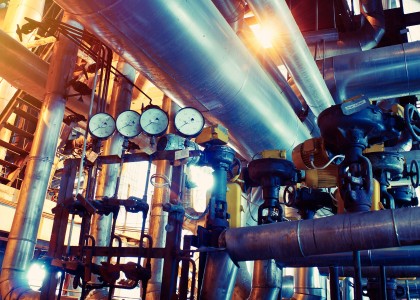Congress should:
- Ensure that the Department of Energy (DOE) meets all deadlines for new and amended efficiency standards
- Clarify DOE authority to set definitions, test procedures, and standards in ways that make most sense, and clarify state authority to encourage equipment efficiency in building codes
- Provide adequate budget for DOE to develop and enforce new and updated standards
- Eliminate budget riders or amendments that limit DOE’s ability to adopt and enforce standards
DOE should:
- Expeditiously complete scheduled standards rulemakings, and continue to set appropriately strong standards
- Set additional standards beyond those already scheduled for products including circulator pumps, unit heaters, and faucets
- Continue to update and improve the test methods that underlie federal efficiency standards and the ENERGY STAR® program, including incorporating advanced controls. DOE should promptly complete test methods that are in progress or due.
- Continue efforts to enforce federal appliance standards, including regional standards
The Office of Information and Regulatory Affairs at OMB should:
- Complete reviews of all rules within the 90-day limit
The Issue
Appliance, equipment, and lighting efficiency standards require products such as refrigerators, electric motors, and air conditioners to meet minimum efficiency levels, thereby reducing energy use, saving money on energy bills, and providing environmental benefits. Efficiency standards save consumers and businesses money by ensuring that cost-effective technological improvements become the norm in new products. Raising standards spurs innovation as manufacturers strive to provide products meeting new standards at the lowest possible cost, and to differentiate innovative, profitable super-efficient products that exceed the new minimum. Overall, these energy efficiency measures make efficient products more affordable and more widely available.
Summary
Appliance, equipment, and lighting efficiency standards have been among the most successful U.S. policies for improving energy efficiency and reducing energy waste. Americans are already seeing dividends from the standards in place, which are saving the typical household with new appliances over $500 per year in lower energy bills. DOE estimates that appliance standards completed through February 2016 will by 2030 save 132 quadrillion Btus of energy, save consumers nearly $2 trillion on their utility bills, and reduce CO2 emissions by more than 7 billion metric tons cumulatively—more than the total U.S. energy use, energy expenditures, and carbon emissions in a year.
DOE's updates to standards completed through the public rulemaking process have added substantially to the savings achieved by congressionally set standards.
Historically, states have been the testing ground for efficiency standards. Successful implementation of efficiency standards at the state level has frequently been followed by national standards. Manufacturers and efficiency proponents often negotiate consensus standards that are then recommended to Congress and/or DOE for adoption. Developing and updating efficiency standards is a continuous process. DOE is required to review each standard at least once every six years and to update it as needed to reflect technology and market changes. At the same time, DOE is working on standards for a number of new products including compressors, portable air conditioners, and fans and blowers.
Efficiency standards rest on the foundation of good test methods, including methods that reflect how products are used in the field, the impact of advanced controls and modes of operation, and the benefits of innovative energy-saving technologies.
In a 2016 report, the Appliance Standards Awareness Project (ASAP) and ACEEE developed product-by-product estimates of the potential future savings resulting from the next updates to standards due after January 2017. ACEEE and ASAP estimated that future updates to appliance standards could achieve the following cumulative savings by 2050:
- Reduce U.S. primary energy use by 70 quads
- Cut consumer and business utility bills by $1.1 trillion
- Cut CO2 emissions by 3.5 billion metric tons
For More Information
- The Appliance Standards Awareness Project (ASAP). www.appliance-standards.org/.
- Next Generation Standards (2016 ASAP-ACEEE report). www.standardsasap.org/documents/reports/report-overview-next-generation-standards.
- DOE standards information. http://energy.gov/eere/buildings/appliance-and-equipment-standards-program.
- ACEEE topic pages. www.aceee.org/topics/appliance-standards and http://aceee.org/topics/equipment-standards.
- CLASP's Global Standards and Labels Database. clasp.ngo.
- The International Energy Efficiency Scorecard. www.aceee.org/portal/national-policy/international-scorecard.
